The American Dream—get a good education, find a steady job that pays well, get married, buy a house in a nice neighborhood, raise a family, live happily ever after. Of course, there’s never been just the one American Dream; there are dozens of American Dreams. There’s the American Movie Star Dream—go to Hollywood, get ‘discovered’, make some movies, have your photo taken at glamorous nightspots with glamorous people, become a star, win an Oscar. Or the American Cowboy Dream—move out West, get a good horse, buy some open land, build a little cabin, raise some cattle. Trade in the horse for a Harley, scrap all the possessions, and you’ve got the American Biker Dream. There are plenty of American Dreams to go around.
For Mike Brodie (aka The Polaroid Kid, for reasons that will become clear) it was the American Hobo Dream. This fantasy was born out of the desperate realities of the 1930s, the era of the Great Depression. It’s the dream of leaving your troubles behind you. It tempts you to abandon your home, give up your family, travel the wide expanses of America with no particular destination in mind, taking only what you can carry on your back, making friends as you go, having adventures, riding the rails. Even people who love their families and friends can sometimes feel the appeal of this dream.
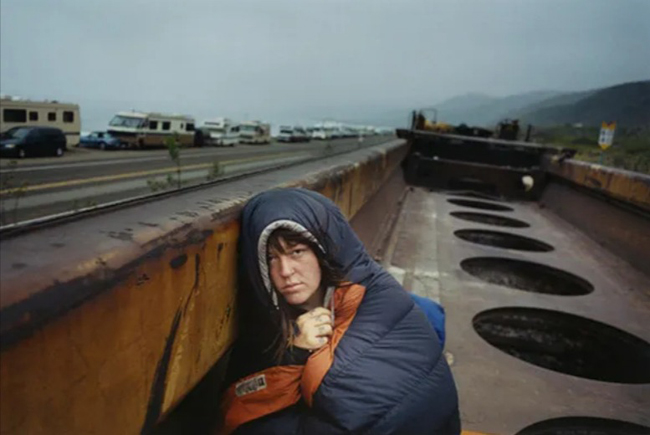
The hobos of the 30s were driven by financial necessity, of course. They were put on the rails by the collapse of the economy and the disintegration of the social institutions they’d trusted to provide stability. They were desperate folks in desperate times making desperate decisions. Some of them took to the life and were content to remain hobos after the economy recovered, but most were eager to give up the hobo life.
In 2003, when 18 year old Mike Brodie left home, riding the rails was a choice, one of many possibilities. It was a conscious alternative to living the straight life. For Brodie and his cohort, hopping trains and living on the road was a lifestyle decision.
Brodie was born in Arizona in 1985 and grew up in Pensacola, Florida. When he was 17 he saw a Polaroid SX-70 in the back of a friend’s car. “[S]he said I could have it, so I went and bought a pack of film and shot a picture of the handlebars of my BMX bike…and it came out with the craziest colors. I was hooked.” The magic of the SX-70, of course, is that you get to watch the photograph appear. You get to watch the image float to the surface. That slightly-delayed gratification is addictive.
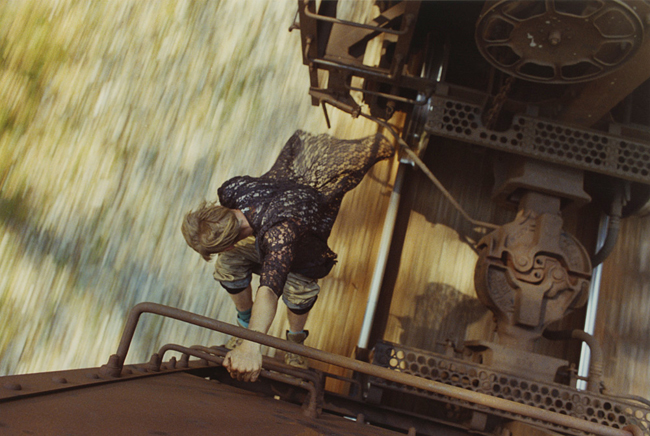
Around that same time period Brodie and his girlfriend, both of whom lived near tracks utilized by freight trains, began to fantasize about hopping trains. A year later he was out of high school and had a job, but he hadn’t abandoned the dream of riding the rails. His girlfriend, however, was still in school. One day, according to Brodie,
“I said ‘Fuck this, man, I want to ride trains!’ So I quit my job and waited around for a while and she still wasn’t ready so I hopped a train to Jacksonville from Pensacola. I didn’t know what I was doing, and ever since then it’s been a learning process, learning how to ride trains correctly.”
He’s been riding the lines ever since.
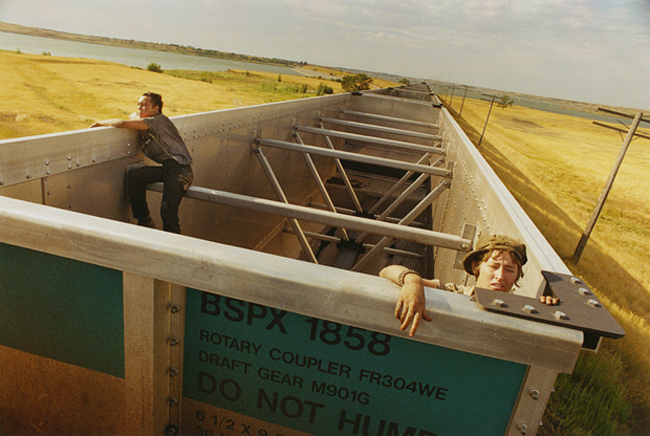
Brodie took along his SX-70 and photographed the people he met and the things he saw. He discovered—and became part of—a subculture of young vagabonds who’d had similar dreams, people who also rode the rails for the adventure of it. Not surprisingly, this community of travelers was fairly tight.
“Half the people in my photographs know each other, they all are in a similar age range and they’re all traveling and hanging out in the same areas, most of them, same groups. So if they don’t already know one another, they will down the road. Or they’re MySpace friends. All those traveling kids all are on MySpace, all have cell phones and all keep in touch with one another.”
It was that periodic access to the internet that turned Brodie from being just another aimless vagabond into a highly-regarded (but still aimless) photographer. It allowed him to create a website (now defunct) and post his digitally scanned Polaroids online. Those photos drew attention of a few art critics and dealers, and before long galleries began to offer him space for a show. His photos began to appear in galleries in Milwaukee, in Atlanta and in Los Angeles. He was invited to show his work at the 2006 Paris International Photo Fair at the Louvre. He was given the Baum Award for Emerging American Photographers in 2008.
It’s not entirely clear to me how Brodie responded to the accolades. They’re not very important in terms of this salon, but it seems important to acknowledge them. Far more important to Brodie’s ‘career’ as a photographer was Polaroid’s decision in 2005 to discontinue the SX-70 Time-Zero film. As the film became harder to find, he was forced to adjust. And he did.
Brodie bought a used Nikon F3 SLR and learned to shoot 35mm. The change in format seems to have coincided with a shift in style. Brodie began to shoot fewer portraits and took more documentary images. Instead of simply showing the people he met and interacted with, he began to document their lives. “I’m evolving more into shooting candidly. I really like just shooting stuff, being there, like when no one’s really paying attention.”
One of the things that’s clear from his portraiture is that his subjects—the young men and women who appear in Brodie’s photographs—aren’t hobos at all, not in the traditional sense. These are post-industrial, post-punk, digitally-linked, fashion-conscious, train-hopping nomads. They may squat for a period of time in abandoned buildings or set up camp in temporary jury-rigged shelters, but they’re on FaceBook and MySpace. They may panhandle for pocket money, they may scrounge for food or make a mulligan stew out of roadkill opossum, but many of them have cell phones. They may not bathe regularly, they may lack basic lavatory facilities, but they carefully cultivate a certain vagabond style and they understand the culture of fashion. Brodie openly acknowledges this.
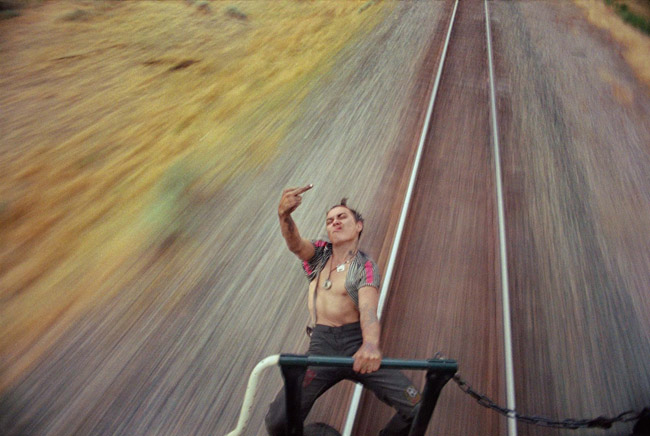
“People think train riding is some sort of sacred culture, and it definitely has deep roots in history, but…people nowadays who ride trains do it for fun. Some want to act like they’re down and out, like impoverished young kids being exploited or something and that’s silly. I ride trains for fun.”
And there it is. It’s about the fun. It’s about the potential for adventure. The grim experience forced on the original hobos by financial crises and devastated lives is now being sought out by young men and women who find their own lives otherwise lacking in meaningful experiences. But I don’t think the fact that these experiences are a result of choice rather than circumstance cheapens them. They’re still real experiences, authentic experiences—just not hobo experiences.
While the hobo experience may be uniquely American, the impulse behind it isn’t. The fact is, the lure of the open road is—and always has been—universal, and adventurous people have always been seduced by it. From Marco Polo, to ibn Khaldūn, to Richard Burton (the explorer, not the actor), to Jack Kerouac the inclination to wander—to see what’s beyond the next hill or around the next bend—has always proven irresistible.
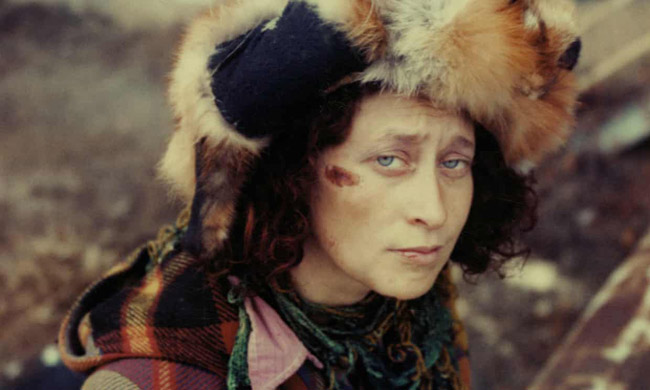
Almost as seductive as the road itself is the desire to record the life lived on it, to document the adventure, to let others know what’s out there, what lies over that hill and around that bend. The record demonstrates the recorder was actually there having the adventure, while simultaneously both tempting others to take to the road themselves and suggesting that most people haven’t the spirit to do so.
The photographs of Mike Brodie won’t appeal to everybody; no photographs do. But unlike, say, the photos of Ryan McGinley, they represent a genuine on-the-road experience. The train-hopping culture of Brodie presents may not tempt you as an individual, but few people are completely immune to the concept behind it. Blind George Reneau, in the 1920s, summed up that hobo spirit pretty well in a song called Wild and Reckless Hobos.
My heart begins to roam around and I begin to sing,
If that freight train goes through this town, I’ll catch it on a wing;
I pulled my cap down over my eyes and stepped up to the track,
I caught the stirrup of an empty car but never did look back.
I suspect Mike Brodie would enjoy that song. As far as I know, he’s still out there, riding the rails.
